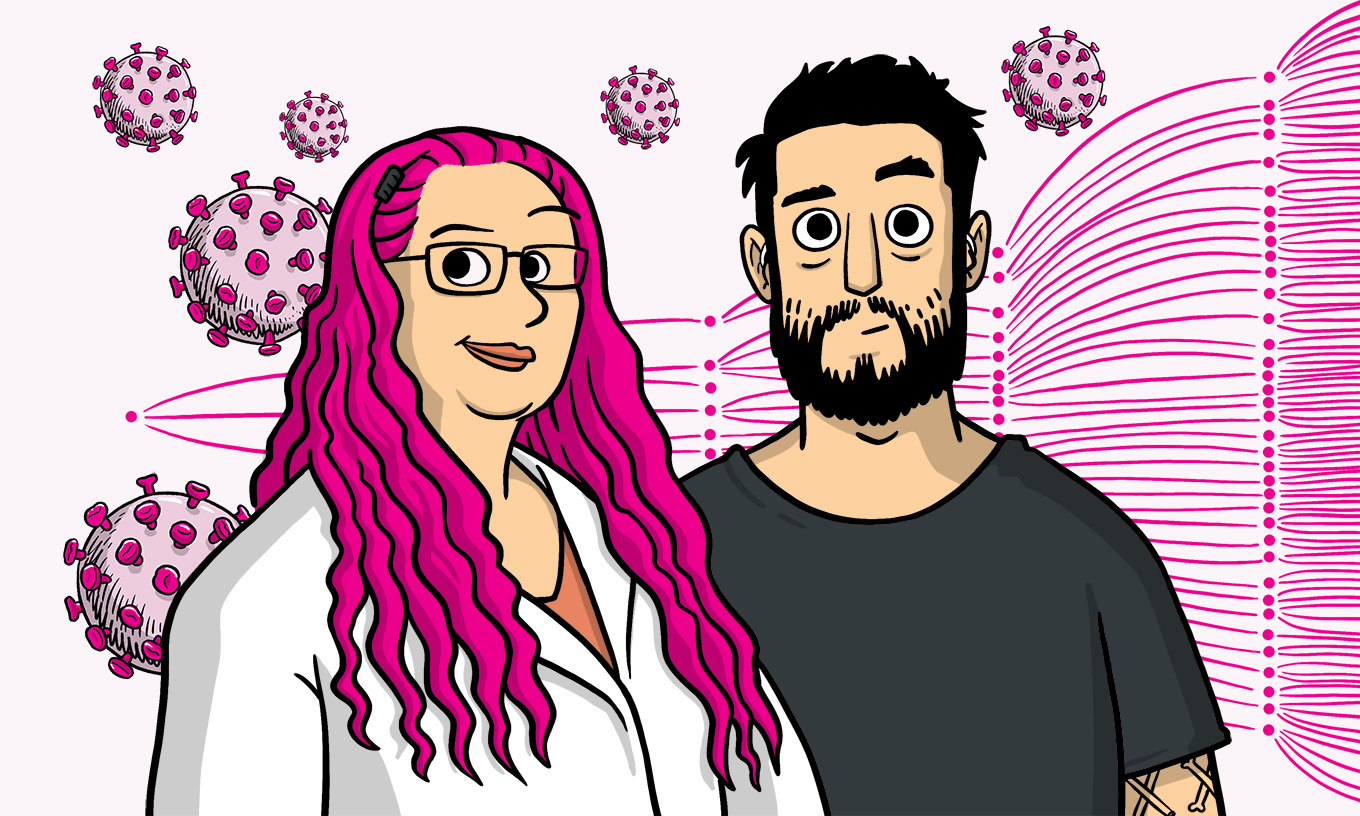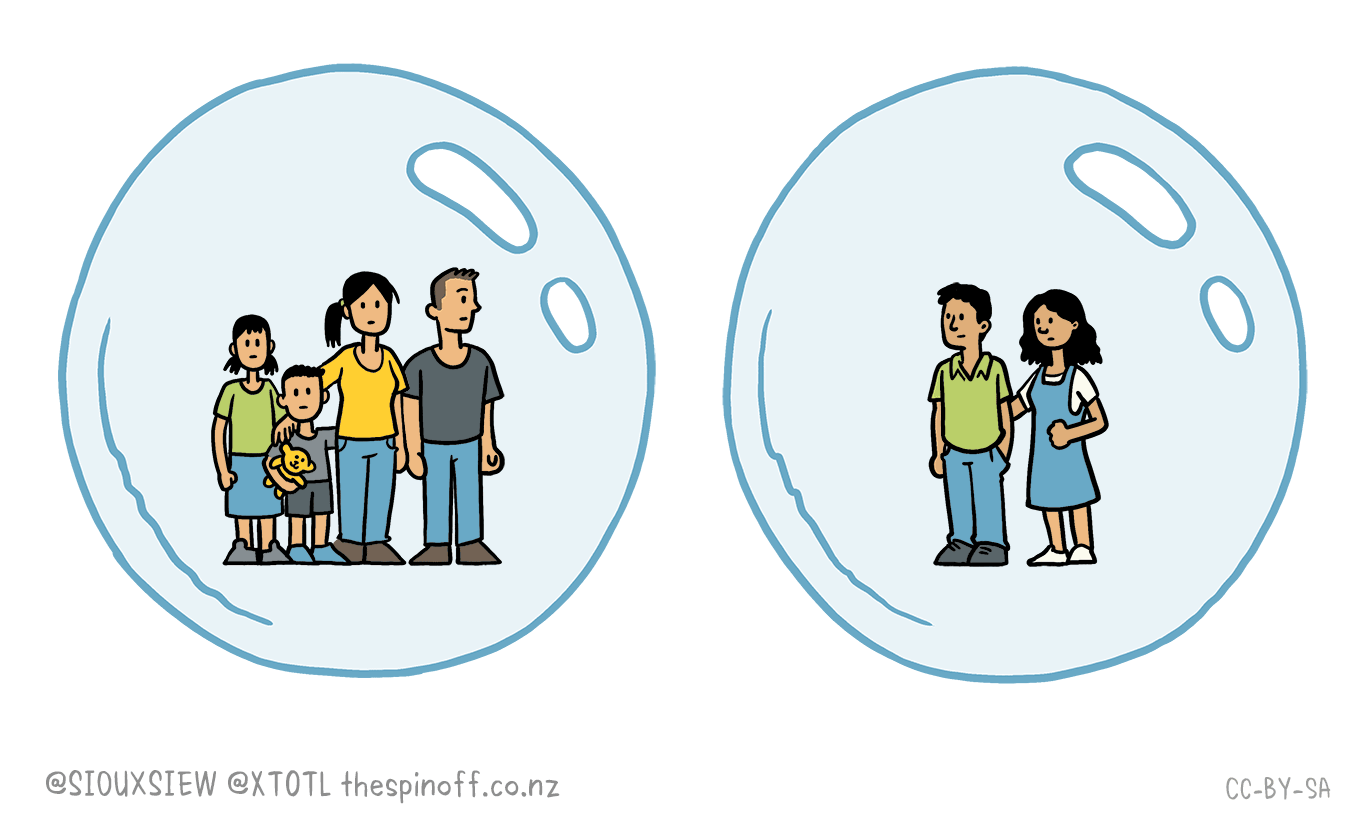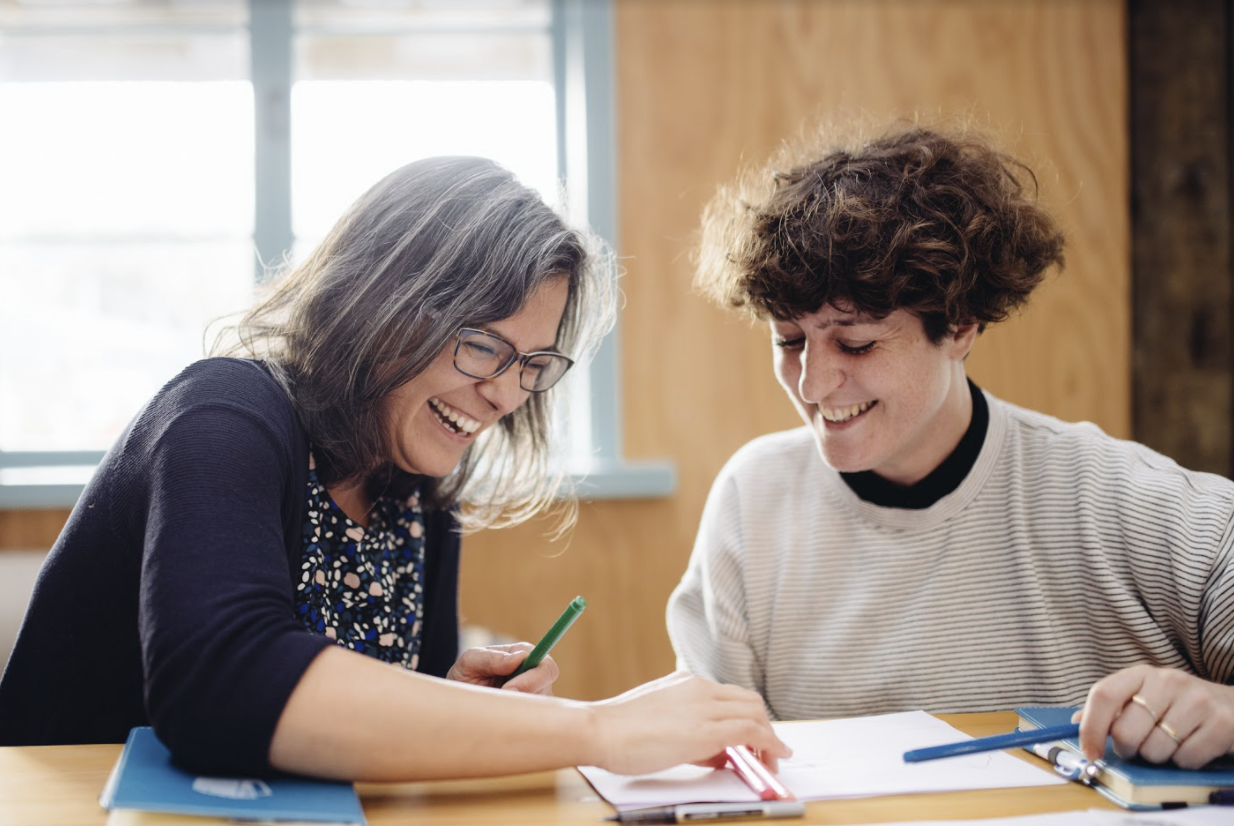Drawing Science
Illustration of Siouxsie Wiles and Toby Morris, by Toby Morris
I was delighted to be selected for a coveted place at Drawing Science, a one-day illustration and science communication workshop held in Tāmaki Makaurau. Run by The Spinoff and the Science Media Centre, Drawing Science was hosted by illustrator Toby Morris and mircobiologist Siouxsie Wiles – both stars of science communication. The workshop brought together 15 illustrators and 15 scientists from across Aotearoa to meet, learn and share knowledge and experience.
Setting the scene
Coffees in hand, we gathered for whakawhanaungatanga session – a chance to introduce ourselves and our work and establish connections and relationships. It was exciting to see a rich variety of illustration work and diverse scientific research – from Antarctic molecular fossils to stick insect camouflage.
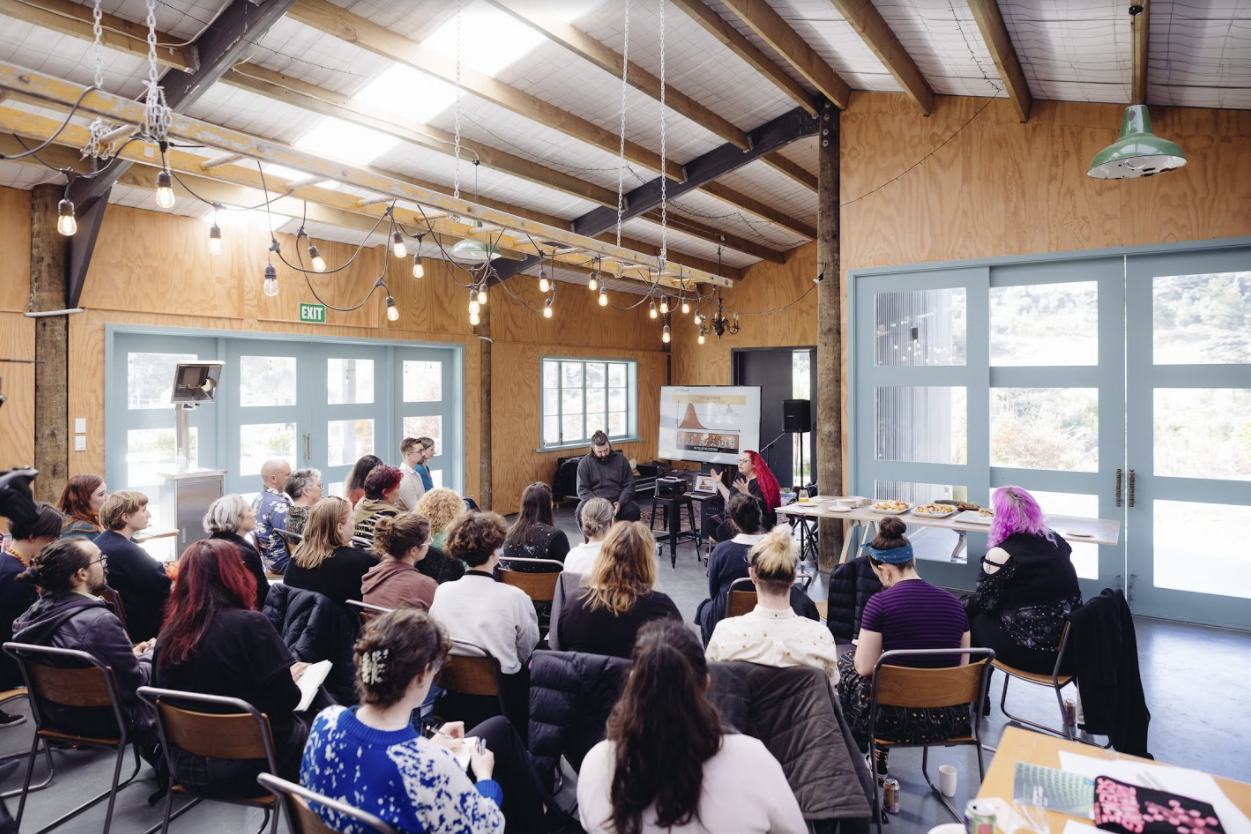
Photo of Drawing Science workshop, by David St George
The dream team
Toby and Siouxsie took us behind the scenes of their COVID-19 illustration communication and answered our burning questions (namely, when did you sleep?!). They explained their basis for collaboration (mutually interested in each other’s work, and both contributors to The Spinoff) and their development as a creative communication team. We learnt about the intense speed of their work during an uncertain and rapidly changing time as New Zealand went into our first national lockdown. As their work started going viral, the ability for illustration to communicate across languages and cultures became more important and motivated them to continue.
COVID-19 Transmission illustration by Toby Morris and Siouxsie Wiles
I was interested to hear how they would update or re-do their work as new facts came to light. Even if it was published weeks previously, no illustration was ever considered ‘finished’ as it could be improved or changed depending on evolving scientific knowledge of the disease and health response. They also spoke about how illustration can support language and reinforce concepts to encourage social change. An example was the idea to ‘stay in your bubble’. It was first briefly mentioned by PM Jacinda Adern in a press conference, then Toby’s illustration made it instantly understandable and supported the public health message.
Breaking Bubbles illustration by Toby Morris and Siouxsie Wiles
An afternoon of connection
After lunch in the sun chatting with other participants, we started the practical section of the workshop. Illustrators grabbed pens, pencils, paper or digital drawing tablets and we had a kind of illustrator/scientist speed dating session. Illustrators were matched with 3 different scientists, and we had 15 minutes with each to learn about their research, communication needs, and chat about the potential of what could we create together. Next we spent 45 minutes with an individual scientist, a great chance to dive more deeply into their research. I had the opportunity to talk with Amber Kreleger, a Senior Groundwater Scientist at Environment Canterbury Regional Council. Our session gave me an opportunity for hands on drawing and exploring ideas together. A wrap-up conversation about how we could build on these fresh connections, followed by drinks together, finished off a marvellous day.
Photo of Amber Kreleger and Judith Carnaby, by David St George
Learnings
The workshop reinforced for me the power illustration has to clearly communicate challenging ideas. All the scientists expressed a need to communicate their research more effectively. They had diverse audiences, but a shared desire to help their audience understand their work in a way that is engaging and easy to understand. We all agreed, illustration is the perfect tool for the job! I left feeling motivated to push my illustration practice further and excited to apply the day’s collaborative learning into the meaningful work that we create at Gusto.
With big thanks to Toby, Siouxsie, Rosabel and The Spinoff team, and the Science Media Centre. See more: a reflection on Drawing Science by The Spinoff, and a great article about illustration and science communication from the Science Media Centre.
